Thingiverse

My Mars Base 2 by shiver
by Thingiverse
Last crawled date: 3 years ago
This is my second design that uses part of the spacecraft for the buildings. They are pre built, connected together and removed after landing.
Not sure on the removal method but shoveling a mound of dirt and sliding each module down a slope 1 at a time would work, removing dirt as you go.
A small electric Bobcat would be very handy if price permits so doing this would be quick. It would also be helpful in shoveling soil into my soil heater to obtain water.
A small Bobcat would be useful as well in leveling the build area and carrying finished bricks from the brink making / H20 gathering building to the build area.
Bars for the geodesic dome would have seals where UV Coated plexiglass triangles are inserted to make it air tight. This rubber would have to withstand the degrading sunlight, otherwise a caulking material would also work. This way people can freely roam inside the dome from building to building without needing walkways and psychologically feel more open and not cramped. Remember that people will be there a long time it's important that they have a stable mindset for the success of the mission
I designed this Mars base with cost-effectiveness and stylistic comfort in mind.
The prelaunch of materials is necessary likely for any attempts to colonize Mars by sending oxygen, building material, solar cells, batteries etc. in advance of human landing.
My idea here contains not just buildings but how it can function as a whole. The problem of radiation I have looked at many different ways including digging into ancient Lava or building brick on top of the structures but this would be very costly and time-consuming. It is important to set up Water, Energy and 1 Dome as soon as possible.
Separate modules would shave solar panels installed on roofs before takeoff as well as all internal machinery needed, i.e. greenhouse section would already have plants growing, lighting, watering etc installed making setup on Mars quicker. and not as much need for a prelaunch of equipment.
The triangular plexiglass dome inserts are lined with the waterproof bags in the inside ( vacuum sealed for transport ) over the entire interior of every building and filled with liquid or liquid sand combination to limit radiation inside the buildings. Harder Beta Radiation can not be stopped even with Lead, so the plastic in the water Bags will do this job as well, the high concentration of Hydrogen in water will stop the more dangerous Neutron Radiation all simple and low cost.
Bringing excavating equipment and drills is really not logical or cost effective for a first settlement. Most of these vehicles require combustion engines and since there is very little oxygen on Mars these vehicles just wouldn't work. It's an effective way of limiting radiation without the billions in expenses to designing and building special machinery to drill and dig underground bases. The cost of carrying such massive machinery also is just too high for a first mission.
Most of the material used in building construction would be the Martian soil itself. By heating it compacting it and bringing additives to solidify it instead of bringing the building material. This would save billions in cost, power and spacecraft size. I then found that work done by Ames Research Center in Moffett Field in California show that using Sporosarcina pasteurii bacteria ( taken from Astronaut's urine ) can be used in making a type of cement solidifying soil in about 2 weeks to that of concrete.
Also in this process of heating Martian soil to make concrete, water may be be extracted at the same time in the same building using a distilling method. It's been proven that water ice exists on mars from the Spirit Rover's shallow soil dig tests. Existing equipment can separate Hydrogen and Oxygen as needed as well from this one collection method.
The main power source can be a larger version of the already tested and robust NASA Nuclear Thermocoupler. If power produced isn't enough I decided to use solar power along with wind power as well because there is an abundance of both on Mars and there is not always sun on Mars depending on the landing site. Landing closer to the poles where frozen liquid is more abundant but sunlight is a problem. If a large Thermocoupler/s could produce enough power it would make landing closer to abundant ice an easier decision then only solar or wind could be a backup power source.
With the wind turbines, I have designed a simple shielding around them that can be controlled by computer or manually to shut and enclose the turbines during heavy windstorms facing the direction of the wind to protect the Turbines.
I also situated them away from the base due to the psychological and physical effects of wind turbines low frequency and infrasound noise that disrupts sleep, causes dizziness, nausea and headaches. All which need to be avoided on a desolate environment.
Small domes can be built around the landing craft after they land to protect them from wind damage and radiation.
Martian soil has shown to be very effective in growing plants so Fertilizer would only need to be sent along with plants, seeds, bulbs, pots, lighting etc. or best, grown Hydroponically without the need for soil.
I tried to make it simple, yet aesthetically pleasing and spacious for the emotional and psychological well being of the Astronauts as well as self sustaining for long periods.
All ground piping, cabling and the Large Gas collection cansiters would be covered in Dirt once operational for Sun / wind shielding.
Astronaut model taken from Nasa's models site for an idea of scale
Not sure on the removal method but shoveling a mound of dirt and sliding each module down a slope 1 at a time would work, removing dirt as you go.
A small electric Bobcat would be very handy if price permits so doing this would be quick. It would also be helpful in shoveling soil into my soil heater to obtain water.
A small Bobcat would be useful as well in leveling the build area and carrying finished bricks from the brink making / H20 gathering building to the build area.
Bars for the geodesic dome would have seals where UV Coated plexiglass triangles are inserted to make it air tight. This rubber would have to withstand the degrading sunlight, otherwise a caulking material would also work. This way people can freely roam inside the dome from building to building without needing walkways and psychologically feel more open and not cramped. Remember that people will be there a long time it's important that they have a stable mindset for the success of the mission
I designed this Mars base with cost-effectiveness and stylistic comfort in mind.
The prelaunch of materials is necessary likely for any attempts to colonize Mars by sending oxygen, building material, solar cells, batteries etc. in advance of human landing.
My idea here contains not just buildings but how it can function as a whole. The problem of radiation I have looked at many different ways including digging into ancient Lava or building brick on top of the structures but this would be very costly and time-consuming. It is important to set up Water, Energy and 1 Dome as soon as possible.
Separate modules would shave solar panels installed on roofs before takeoff as well as all internal machinery needed, i.e. greenhouse section would already have plants growing, lighting, watering etc installed making setup on Mars quicker. and not as much need for a prelaunch of equipment.
The triangular plexiglass dome inserts are lined with the waterproof bags in the inside ( vacuum sealed for transport ) over the entire interior of every building and filled with liquid or liquid sand combination to limit radiation inside the buildings. Harder Beta Radiation can not be stopped even with Lead, so the plastic in the water Bags will do this job as well, the high concentration of Hydrogen in water will stop the more dangerous Neutron Radiation all simple and low cost.
Bringing excavating equipment and drills is really not logical or cost effective for a first settlement. Most of these vehicles require combustion engines and since there is very little oxygen on Mars these vehicles just wouldn't work. It's an effective way of limiting radiation without the billions in expenses to designing and building special machinery to drill and dig underground bases. The cost of carrying such massive machinery also is just too high for a first mission.
Most of the material used in building construction would be the Martian soil itself. By heating it compacting it and bringing additives to solidify it instead of bringing the building material. This would save billions in cost, power and spacecraft size. I then found that work done by Ames Research Center in Moffett Field in California show that using Sporosarcina pasteurii bacteria ( taken from Astronaut's urine ) can be used in making a type of cement solidifying soil in about 2 weeks to that of concrete.
Also in this process of heating Martian soil to make concrete, water may be be extracted at the same time in the same building using a distilling method. It's been proven that water ice exists on mars from the Spirit Rover's shallow soil dig tests. Existing equipment can separate Hydrogen and Oxygen as needed as well from this one collection method.
The main power source can be a larger version of the already tested and robust NASA Nuclear Thermocoupler. If power produced isn't enough I decided to use solar power along with wind power as well because there is an abundance of both on Mars and there is not always sun on Mars depending on the landing site. Landing closer to the poles where frozen liquid is more abundant but sunlight is a problem. If a large Thermocoupler/s could produce enough power it would make landing closer to abundant ice an easier decision then only solar or wind could be a backup power source.
With the wind turbines, I have designed a simple shielding around them that can be controlled by computer or manually to shut and enclose the turbines during heavy windstorms facing the direction of the wind to protect the Turbines.
I also situated them away from the base due to the psychological and physical effects of wind turbines low frequency and infrasound noise that disrupts sleep, causes dizziness, nausea and headaches. All which need to be avoided on a desolate environment.
Small domes can be built around the landing craft after they land to protect them from wind damage and radiation.
Martian soil has shown to be very effective in growing plants so Fertilizer would only need to be sent along with plants, seeds, bulbs, pots, lighting etc. or best, grown Hydroponically without the need for soil.
I tried to make it simple, yet aesthetically pleasing and spacious for the emotional and psychological well being of the Astronauts as well as self sustaining for long periods.
All ground piping, cabling and the Large Gas collection cansiters would be covered in Dirt once operational for Sun / wind shielding.
Astronaut model taken from Nasa's models site for an idea of scale
Similar models
thingiverse
free

My Mars Base 1 by shiver
...when they're dusty. alternately a mechanism can be made similar to a light bar on a scanner that sweeps...
thingiverse
free

Subterranean Martian Pyramid by austinkbutler
...id are three levels which serve as housing, storage, and work areas. large cylinders surround the pyramid storing water and fuel.
thingiverse
free

Mars Base: The Valles Marineris by kwilliams
...h the red planet, mars, in mind.
link to my hydroponics system on maker bot thingiversehttp://www.thingiverse.com/thing:359538
cults
free

Mars Martian
... support.
you might need to sand the tips of the pipe to get a snuggle fit on the model. use glue to secure the antenna in place.
thingiverse
free

First Mars Colony by aprzy15
...aut food.
got your traditional lounge. nice couch to rest on after a long day at work.
basic kitchen with living necessities.
thingiverse
free
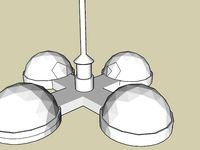
Ares permanent settlement by zivziv
...n rover.
in the event of a solar flare the crew will take shelter in an underground bunker until it is safe to leave the shelter.
thingiverse
free

MakerBot Mars Base (MMB) by dmatsuda1029
...erate much more power.
assembly of the printed design is necessary for making the model printable by a makerbot replicatorâ¢.
thingiverse
free

UEM MARS LAB-UNIVERSIDAD EUROPEA MADRID & NAOTECH by rlagioia
...els will cover an area of 7 meters long and 14 meters wide. this surface is fully mobile to produce the maximum amount of energy.
thingiverse
free

makerbot mars sector 7 by Flynhawaiian
...and to keep the amount of waste down on the planet. this facility handles garbage, recycle, and water treatment for the facility.
thingiverse
free

Turbine and Planetary gear by Alexvaz2
... the needed speed in order for the wind turbines to work, it would need an electricity source such as a battery or a solar panel.
Shiver
3d_export
free

duskfang from tes iv
...duskfang from tes iv 3dexport sword dawnfang/duskfang from dlc "shiverng ...
3d_export
$20

Enderman minecraft Baby
...also make a long, loud, threatening sound and run shiverng at the player to attack them. if an enderman...
thingiverse
free

Shivers by WoomyUnitedToday
...shivers by woomyunitedtoday
thingiverse
luigi's mansion
sketchfab
$15

Shiver me timbers!
...ttps://www.artstation.com/marketplace/p/mjyyv/perfect-wooden-planks - shiver me timbers! - buy royalty free 3d model by misslumos
thingiverse
free

Jeep Single Letters by shiver
...jeep single letters by shiver
thingiverse
requested separate letters from my jeep logo
thingiverse
free
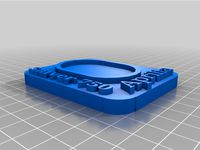
Stand Support Aprilia Shiver 750
...0
thingiverse
infill 100%.
the stand support needs reinforcement with epoxy glue on the underside because the weak pla material.
thingiverse
free

The Uncloaked TARDIS by shiver
...;m not sure who made the actual uncloaked design but i thought it would be cool to have a model of the actual look of the tardis.
thingiverse
free

Aprilia Shiver 750 indicator light adapter LED by hoto6520
...prilia shiver 750 indicator light adapter led by hoto6520
thingiverse
adapter from the original turn signals to led turn signals
thingiverse
free

Albert the Shivering Giraffe by susel
...ng his own clothes. but good yarn is hard to get in the savannah, and learning to knit with your hooves requires much practice...
renderosity
$5

3D Scenery: Shivering Frostscape
... other material settings) everything else works as they should, including the morphs. more info included in the readme.</p>
Mars
3d_ocean
$10

Mars
...tar stars system universal way world
this is the mars with atmosphere. the textures file including 4 maps. thank you for looking.
turbosquid
$2

MARS
...
turbosquid
royalty free 3d model mars for download as blend on turbosquid: 3d models for games, architecture, videos. (1170651)
3ddd
free

ClassiCon Mars
...classicon mars
3ddd
classicon , mars
стул mars от classicon.
3ds max 2011 + fbx. vray.
turbosquid
$12
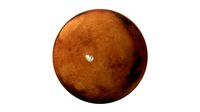
Mars
...id
royalty free 3d model mars for download as blend and gltf on turbosquid: 3d models for games, architecture, videos. (1659040)
turbosquid
$1

the mars
...oyalty free 3d model the mars for download as blend and blend on turbosquid: 3d models for games, architecture, videos. (1704346)
turbosquid
free

mars
...squid
royalty free 3d model mars for download as max and obj on turbosquid: 3d models for games, architecture, videos. (1355198)
turbosquid
$59

Mars
...
royalty free 3d model mars for download as max, obj, and fbx on turbosquid: 3d models for games, architecture, videos. (1259238)
turbosquid
$12

Mars
...lty free 3d model mars for download as 3ds, max, obj, and fbx on turbosquid: 3d models for games, architecture, videos. (1152228)
turbosquid
$5

Mars
...y free 3d model mars for download as obj, fbx, blend, and dae on turbosquid: 3d models for games, architecture, videos. (1292956)
3d_export
free

mars landscape
...mars landscape
3dexport
mars landscape made with word machine.
Base
archibase_planet
free
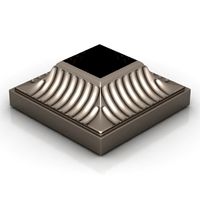
Base
...base
archibase planet
base column column base
base 1 - 3d model (*.gsm+*.3ds) for interior 3d visualization.
archibase_planet
free

Base
...base
archibase planet
base column base column
base 5 - 3d model (*.gsm+*.3ds) for interior 3d visualization.
archibase_planet
free
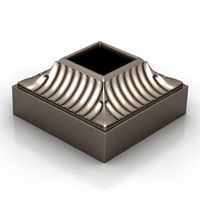
Base
...base
archibase planet
base column column base
base 7 - 3d model (*.gsm+*.3ds) for interior 3d visualization.
archibase_planet
free
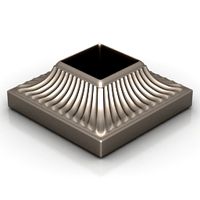
Base
...base
archibase planet
base column column base
base 2 - 3d model (*.gsm+*.3ds) for interior 3d visualization.
archibase_planet
free
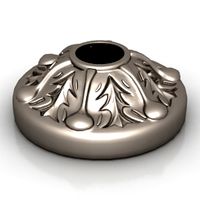
Base
...base
archibase planet
base column column base
base 3 - 3d model (*.gsm+*.3ds) for interior 3d visualization.
archibase_planet
free
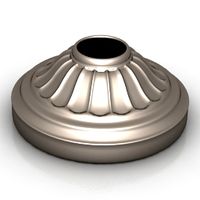
Base
...base
archibase planet
base column column base
base 4 - 3d model (*.gsm+*.3ds) for interior 3d visualization.
archibase_planet
free

Base
...base
archibase planet
base column base column
base 6 - 3d model (*.gsm+*.3ds) for interior 3d visualization.
archibase_planet
free
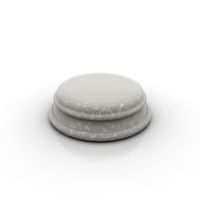
Base
...base
archibase planet
foundation base
column base ionic - 3d model (*.gsm+*.3ds) for interior 3d visualization.
archibase_planet
free
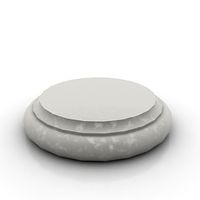
Base
...base
archibase planet
foundation base
column base tuscan - 3d model (*.gsm+*.3ds) for interior 3d visualization.
design_connected
$18

Base
...base
designconnected
tom dixon base computer generated 3d model. designed by dixon, tom.
2
design_connected
$11
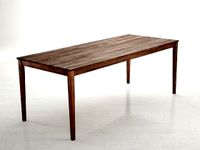
No 2
...no 2
designconnected
sibast no 2 computer generated 3d model. designed by sibast, helge.
turbosquid
$6
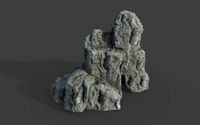
Cliff Rock 2-2
...uid
royalty free 3d model cliff rock 2-2 for download as obj on turbosquid: 3d models for games, architecture, videos. (1619161)
turbosquid
$29

Book variation 2 2
...3d model book variation 2 2 for download as max, obj, and fbx on turbosquid: 3d models for games, architecture, videos. (1366868)
turbosquid
$22

Classic baluster (2) (2)
...assic baluster (2) (2) for download as max, obj, fbx, and stl on turbosquid: 3d models for games, architecture, videos. (1483789)
turbosquid
$99

Smilodon 2 Pose 2
... available on turbo squid, the world's leading provider of digital 3d models for visualization, films, television, and games.
turbosquid
$20
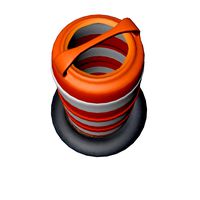
Barrel Barricade 2-2
... available on turbo squid, the world's leading provider of digital 3d models for visualization, films, television, and games.
turbosquid
$6

Wall Trophy (2) (2)
... available on turbo squid, the world's leading provider of digital 3d models for visualization, films, television, and games.
turbosquid
free
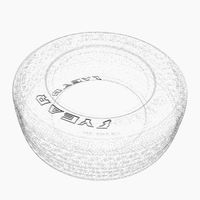
Tire label 2 of 2
... available on turbo squid, the world's leading provider of digital 3d models for visualization, films, television, and games.
3ddd
$1
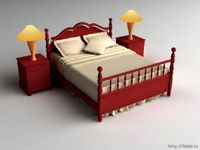
Кровать, 2 тумбочки, 2 светильника
...кровать, 2 тумбочки, 2 светильника
3ddd
кровать, 2 тумбочки, 2 светильника
нормальное качество
формат 3ds max
без текстур
3ddd
free
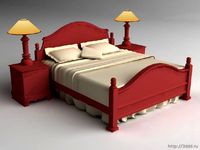
Кровать, 2 тумбочки, 2 светильника
...кровать, 2 тумбочки, 2 светильника
3ddd
кровать, 2 тумбочки, 2 светильника
нормальное качество
формат 3ds max
без текстур
